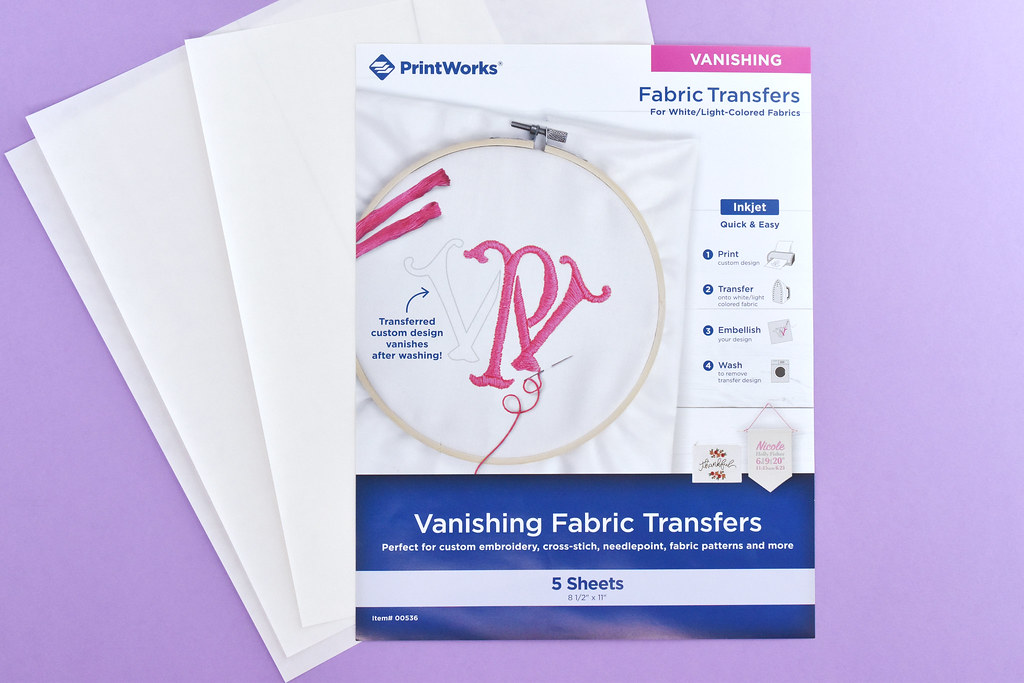
As someone who embroiders a lot (like, a lot a lot), I'm always looking for new options for transferring embroidery patterns onto fabric and other materials. So when PrintWorks contacted me about their Vanishing Transfer Paper, I was happy to test it and share my thoughts. Especially when I learned that it's an iron transfer process.
For years I've looked into what it would take to have fancy iron-on patterns to sell with my designs, and it's always been a bigger project and a different direction than I wanted to take for my business. But being able to print my own at home? That sounded like something I wanted to try!
For full disclosure, PrintWorks sent me this pack of transfer paper in exchange for my review of the product. I'm going to show you what the process is like and what I like and don't about how this works...I promise these are all my own views!
Oh, and I'm using my Spoopy Time embroidery pattern, which you can find in my Etsy shop!
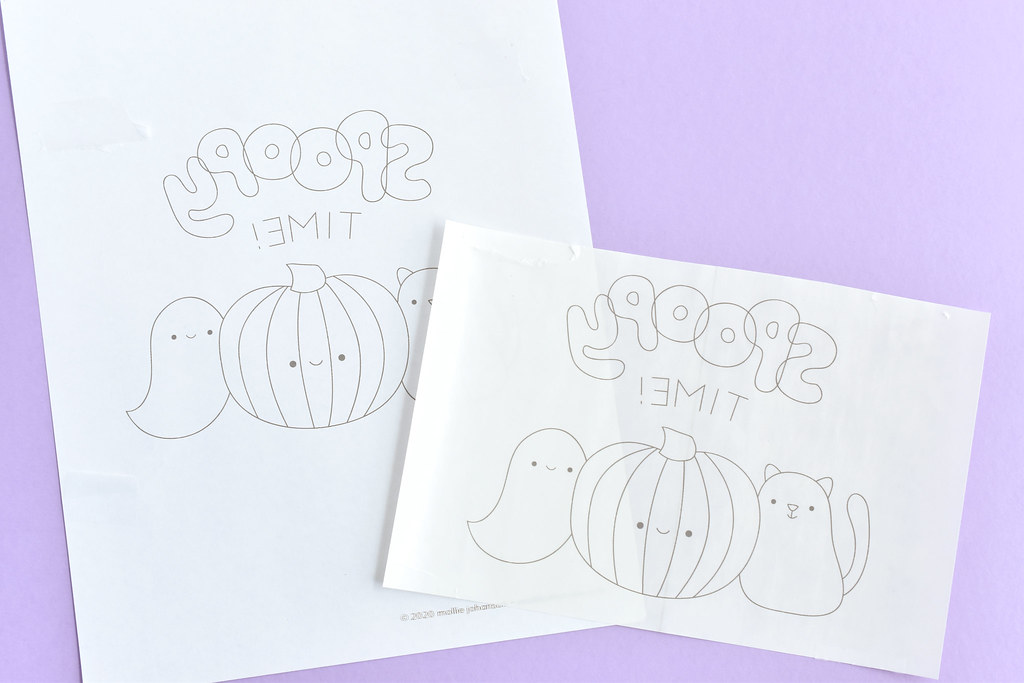
If you've ever used transfer patterns (like the ones from Sublime Stitching), or even a transfer pen, you know that you start with patterns that are reversed so they transfer correctly. You can print your reversed pattern directly on this Vanishing Transfer Pattern, but to save material I printed on regular paper then taped just the transfer paper I needed over the design. (See that whole process here.)
One thing that's important to know going into using these is that you need to let the pattern dry after it goes through your inkjet printer (oh, and that you CAN'T use a laser printer). It needs about 30 minutes before you try to transfer anything.

What you don't see on the page right away is that this transfers by way of a film of sorts. When I peeled away the tape I used when printing you can see that a little here. The "film" stuck to the tape and left this torn section.
This won't interfere with how the transfer works AT ALL, but it's something interesting to see and note!

Next, you trim your transfer. They recommend cutting about 1/8 of an inch from the printed pattern. This would be tricky for some areas of a pattern like mine because you really want to keep the sections together. I definitely didn't trim quites as close as I could have, but it didn't affect the outcome.
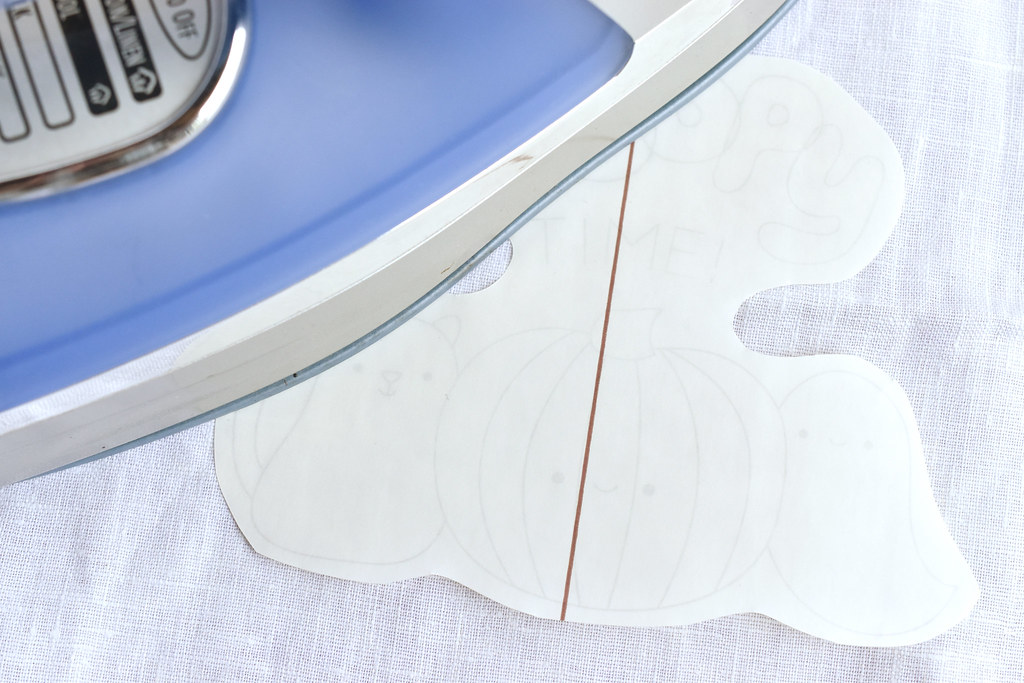
Now it's transfer time! Place the pattern face down on your fabric and press it. A lot. Hard. They give specific instructions for this, but you need to give it lots of even pressure.
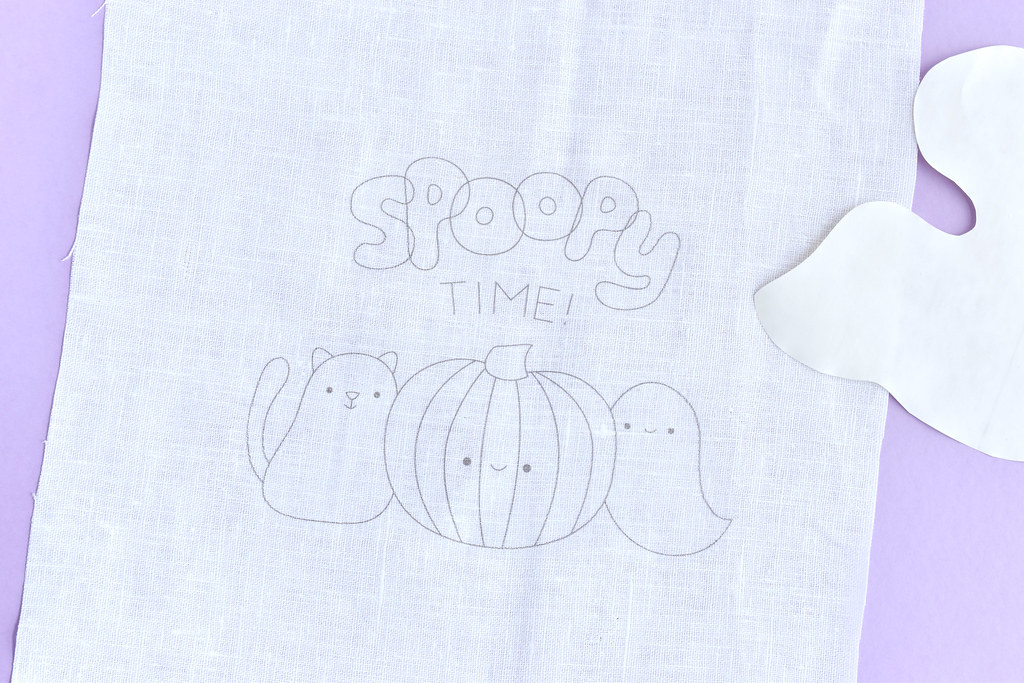
When you peel away the paper, you should see a beautiful transfer like this! I've done a few transfers now, and they all came out great.

Okay, but remember that "film" I mentioned? It transfers to the fabric along with your pattern. It's hard to photograph, but if you look closely you can see the edge around the design. When you feel it, it's almost satin-like.

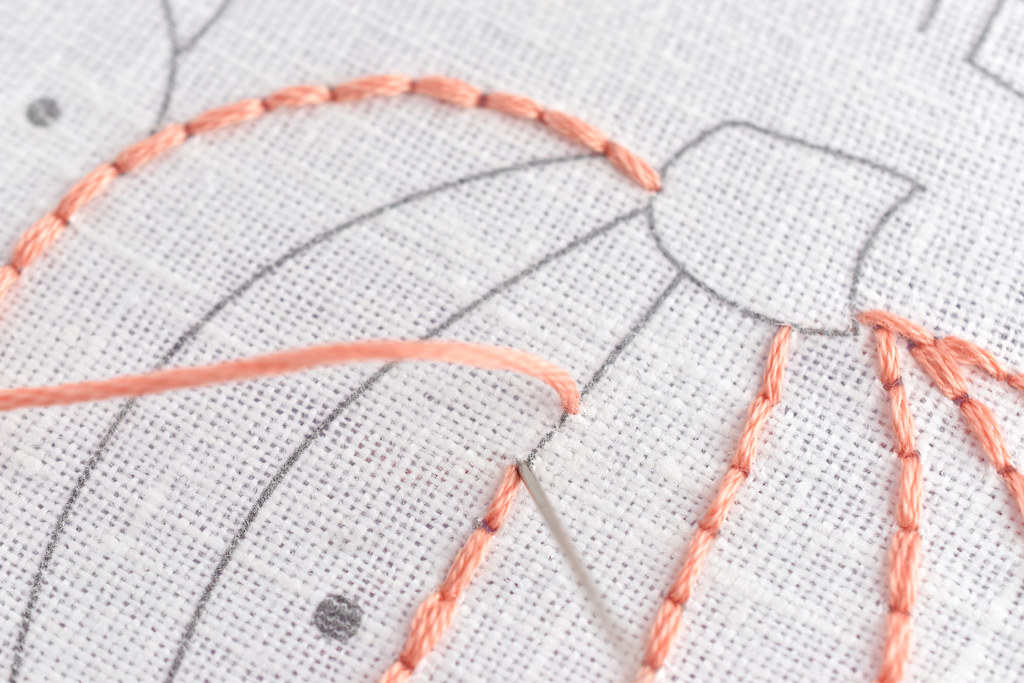
Similar to other products, you stitch through the coating and the pattern on your fabric. And let me tell you, stitching through this is amazing. There's no stickiness, and it's just like stitching through only the fabric. I LOVE the process of embroidering with this material.
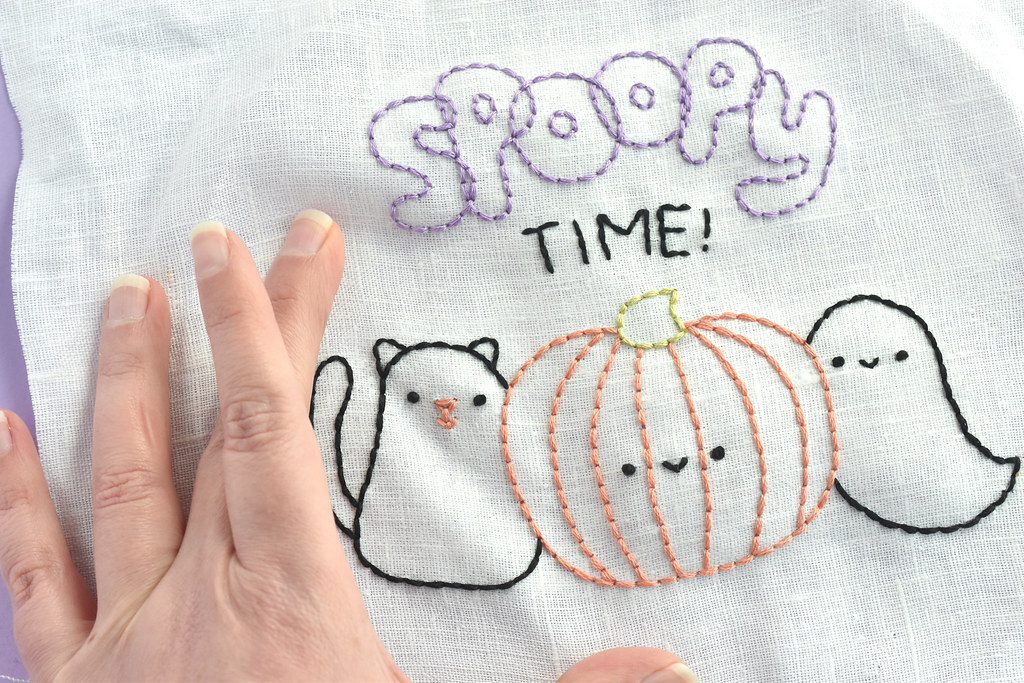
When the embroidery is finished, you're still left with that coating or film on your fabric. I realized when looking at my photos that for my purposes, I could probably leave it on there and no one would know. But for real life use, you don't really want that there, and this is where this gets a little tricky.
Not tricky like, difficult, but more like, not ideal. To help break up the film, they recommend stretching the fabric and transfer. First, I'm working on linen so I can only stretch on the bias. I think these transfers were originally designed with t-shirts in mind. But also, stretching your embroidery can potentially distort your stitches, which I don't love.

To fully remove the transfer and the coating, you need to run it through the washing machine. I've tried more than once to do this by hand in a tub of warm to hot water, but it just isn't enough to remove it all. This is my biggest disappointment with the Vanishing Transfer Paper. Some embroidered items will be just fine going in the laundry, but this would be a deal breaker for delicate embroidery.
At any rate, I put this in a delicates bag, crossed my fingers, and tossed it in the wash. Then I let it air dry. It came out wrinkled, but fine. Again, this is chunky embroidery with basic stitches. Oh, I also did a test where I didn't stitch the entire pattern so I could see how it washed. Every bit of the pattern washed away, which, I have to say, impressed me.
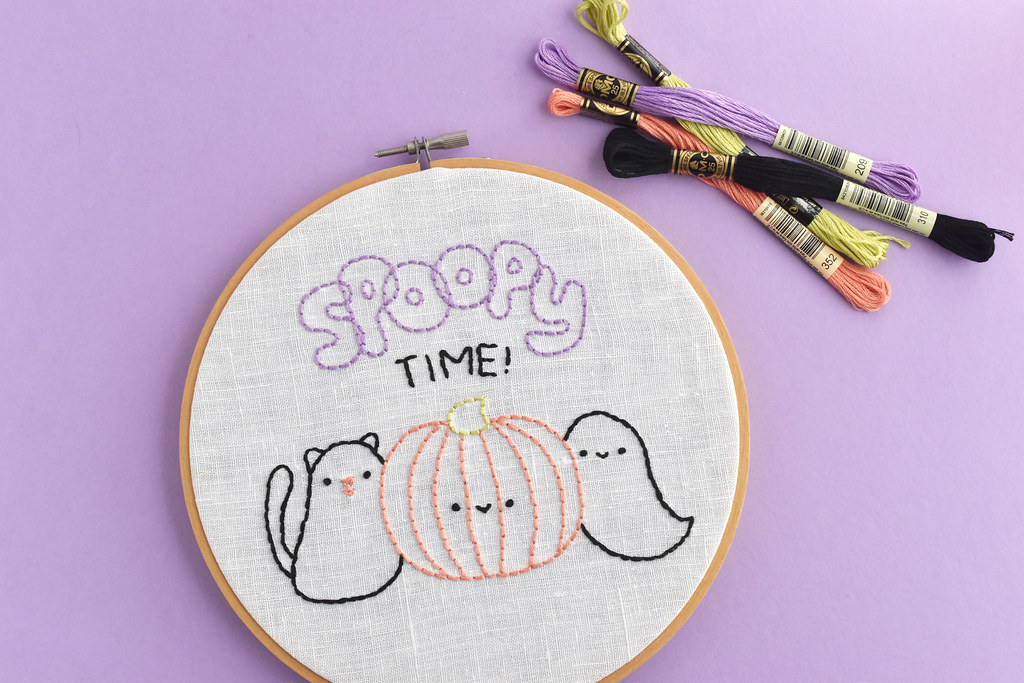
After a gentle pressing, I re-hooped my embroidery and you can't even tell that it went through the washing machine.
So what are my thoughts? Here are my pros and cons!
Pros: easy to print and iron without tracing, no stickiness so it's a dream to stitch, every bit of the transfer washes away
Cons: needs time to dry before you can transfer it, removing the transfer requires stretching and a washing machine
Overall, I'm planning on keeping this in my arsenal of pattern transfer methods. I'll use this for times when I don't want to trace a pattern or when the weather is humid (which makes Sulky Sticky Fabri-Solvy extra sticky), and when washing is an option. And I may even be less afraid of machine washing my embroidery!
Thank you for such an extensive and comprehensive review. I will give this product a try too!
ReplyDeleteDo you think the film is substantial enough to stabilize stitching knits without other stabilizers?
ReplyDeleteI don't stitch on knits very often, but I don't think this is enough. The fabric still feels very soft with the film on there. In fact, it's designed that you could use it as a temporary t-shirt transfer, meaning you could wear it comfortably with this in place.
Delete